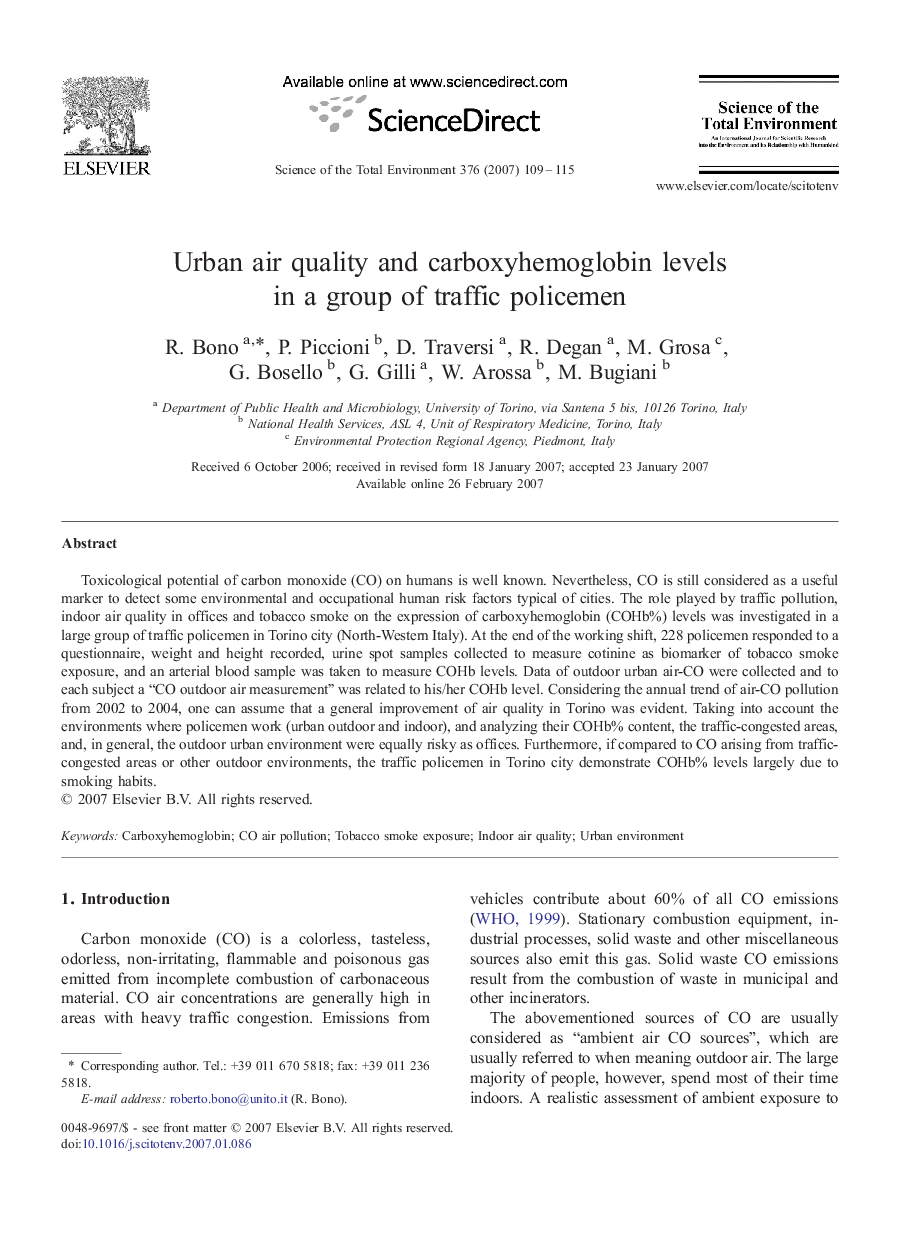| Article ID | Journal | Published Year | Pages | File Type |
|---|---|---|---|---|
| 4433480 | Science of The Total Environment | 2007 | 7 Pages |
Toxicological potential of carbon monoxide (CO) on humans is well known. Nevertheless, CO is still considered as a useful marker to detect some environmental and occupational human risk factors typical of cities. The role played by traffic pollution, indoor air quality in offices and tobacco smoke on the expression of carboxyhemoglobin (COHb%) levels was investigated in a large group of traffic policemen in Torino city (North-Western Italy). At the end of the working shift, 228 policemen responded to a questionnaire, weight and height recorded, urine spot samples collected to measure cotinine as biomarker of tobacco smoke exposure, and an arterial blood sample was taken to measure COHb levels. Data of outdoor urban air-CO were collected and to each subject a “CO outdoor air measurement” was related to his/her COHb level. Considering the annual trend of air-CO pollution from 2002 to 2004, one can assume that a general improvement of air quality in Torino was evident. Taking into account the environments where policemen work (urban outdoor and indoor), and analyzing their COHb% content, the traffic-congested areas, and, in general, the outdoor urban environment were equally risky as offices. Furthermore, if compared to CO arising from traffic-congested areas or other outdoor environments, the traffic policemen in Torino city demonstrate COHb% levels largely due to smoking habits.
